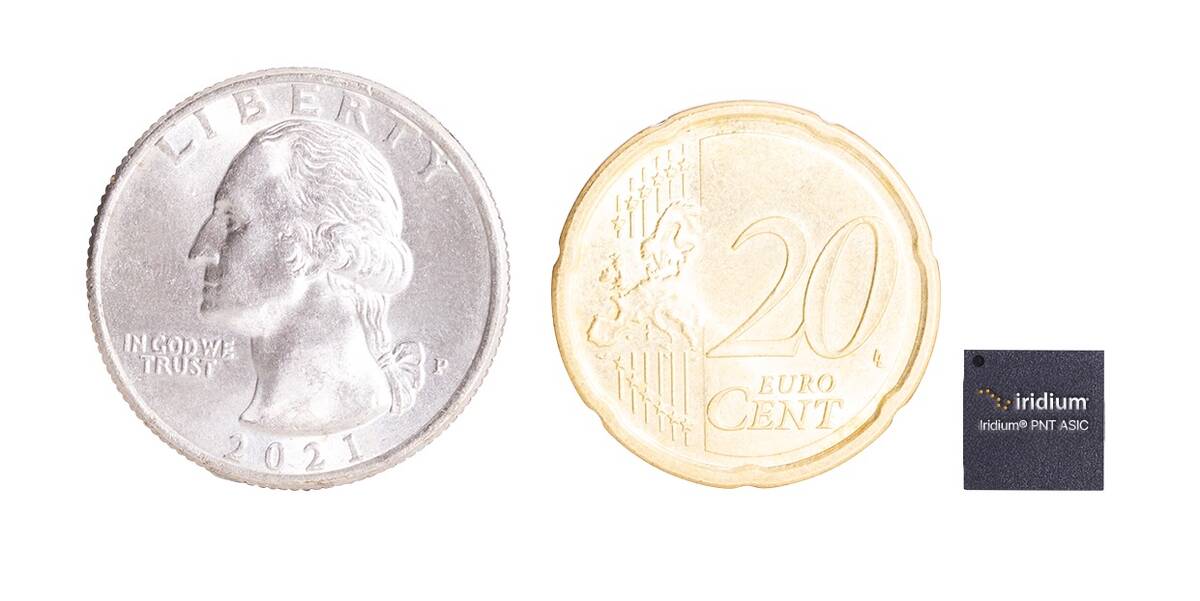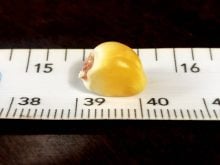When assessing value in a corn crop, producers’ needs vary according to end uses.
For cash croppers, it is measured in yield and bushels, but livestock producers want greater digestibility and more efficient feed use.
It’s been 25 years since genetically modified hybrids became the norm and some in the seed trade say dual hybrids serve grain and feed sectors equally well. However, livestock producers seek better digestibility and palatability for their animals and choose quality over quantity.
Read Also

New Iridium technology helps block GPS spoofing
A tiny new chip will allow Iridium’s Positioning, Navigation and Timing (PNT) signals to be received much smaller devices, create a backstop against Global Positioning Systems (GPS) spoofing.
Why it matters: Livestock producers are looking for production benefits in addition to yield in their corn hybrids.
“Growers’ decisions are more science-based now, they’re looking at more data, they have more information at their fingertips,” says Rick Van Laecke, president of Horizon Seeds.
“In some ways, it’s as though there’s renewed interest but it’s the fact they know what their goals are, and that’s caused more demand for silage-specific hybrids.”
Plant breeders have given priority to standability, yield and test weights but tough stalks and heavy test weights are characteristics of a poor silage hybrid.
“You want that energy to be extractable by the cow and not that bamboo-type stalk for the cow to chew on. They’re not happy if their mouths are sore,” says Van Laecke.
Jacquie MacCormack is Horizon Seeds’ southwestern business lead. She sees a noticeable shift among higher-end dairy and beef producers toward desire for silage quality.
“It’s about digestibility and making sure what you’re getting is of use to the cow instead of bulk tonnage that won’t be as digestible,” she says. “The better it is for digestibility, the less the producer has to supplement with other things, which makes it more cost effective.”
For dairy producers, it comes down to striking a balance: was there more milk from a cow with less feed? Or did it require more feed to get the same amount of milk?
Balancing rations has become a greater focus for nutritionists, says MacCormack.
“You can balance anything but if you have a good silage hybrid to begin with, you’re better off in the end.”

Adjusting advice
Among retailers and advisers, silage-specific hybrids also seem to fall into the quality versus quantity discussion. Farmers who feed corn want hybrids to match their needs while also looking for higher yields.
“They will not sacrifice much tonnage for better quality, but I would say there is a delicate balancing act,” says Steph Berlett, a certified crop advisor with Brussels Agromart.
“It’s more than calling it a ‘dual hybrid’ or saying, ‘it’s a tall plant, so it’s good for silage,’ especially when they have the technology for tracking their feed data. They’re asking more detailed questions about their hybrids’ abilities.”
Berlett says such demands require more layers of management. Seed companies are challenged with breeding programs, retailers face bagging and storage requirements and must stay current on trait approvals, and livestock producers have a higher focus on animal nutrition.
Advisors must be more diligent with advice and learn more about each producer’s needs relating to animal health.
“In that regard, there needs to be better communication between nutritionists and crop advisors,” says Berlett. “We can’t go out and push ‘hybrid A’ without understanding the implications to the grower’s feed sample.”
Other challenges
Size of operations, storage capacity and the agronomics of plant populations, disease and pest management are also parts of the equation.
Robert Moloney says silage-specific hybrids are a niche market.
“Animal intake tends to be higher with leafy hybrids,” says Moloney, a crop advisor with Boyd’s Farm Supply in Fordwich.
“That means more acres and more space to hold the feed. A higher quality feed typically means you need less storage and with the increasing size of operations, that’s a consideration.”
On the quality side, hybrids with a trait like brown mid-rib increase digestibility but need more acres due to lower yield or other challenges like lodging or disease tolerance.
That can be an issue for plant breeders. Although they’re breeding for a lot of the same characteristics, silage-specific is a set of traits and genetics that have to be included.
“The problem with silage-specific is you don’t have an option for taking it as grain,” says Moloney.
“The logistics of silage-specific hybrids, with isolation requirements for seed production, small batches, physical seed bag inventory if they want different branding, are also limiting.”















